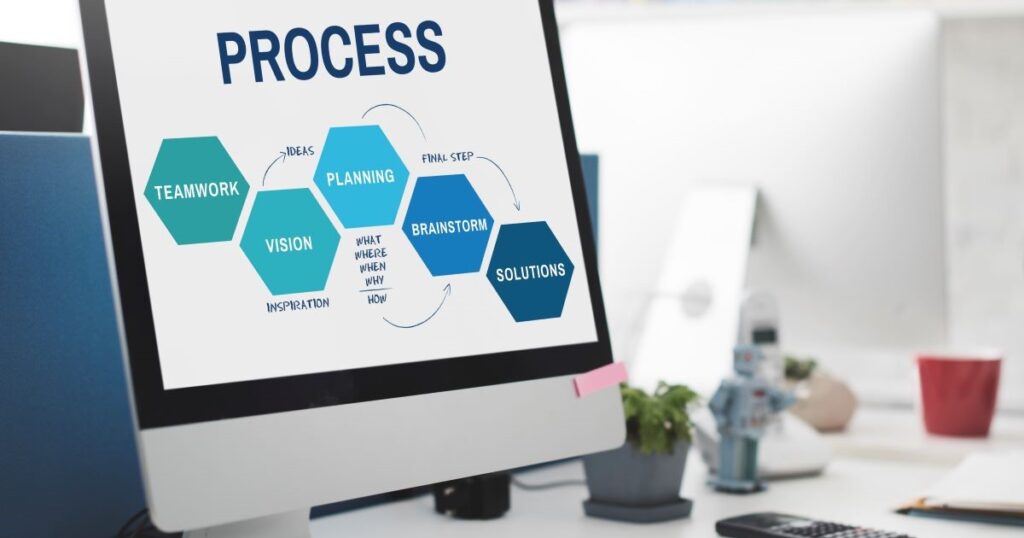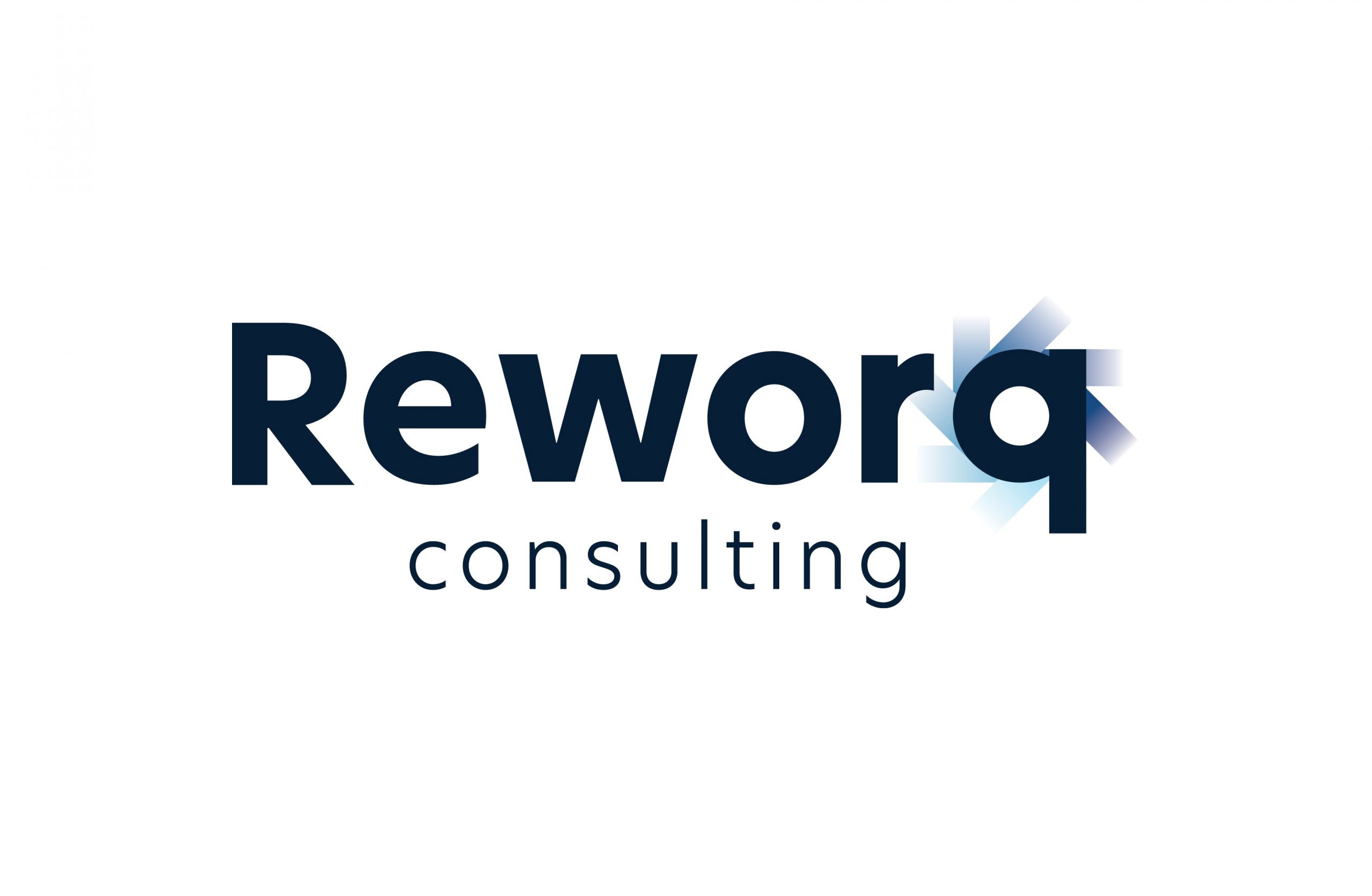Organisations adopt the discipline of Change Management in separate ways, which can vary in scope and purpose depending on their business needs. It is especially important that organisations leverage a structured, yet flexible approach to managing change. Whatever Change Management might look like, the end goal is for the Executive Management Team to engage leadership with strategic vision and help individuals, teams, and their organisation with adapting to new change.
Minor changes may be easy to execute – but what do you do when you need to execute sweeping organisational change?
Every organisation is unique. Every business works through their strategy execution by addressing various management needs and change initiatives that are unique to them and industry segment. Stakeholders must understand the business, the internal mechanics and feel involved in the strategy process, so they know what they really need to facilitate future change. Whatever the end-goal, effective implementation of change within an organisation requires strategic leadership to drive business results.
Organisations are expected to be adaptable, flexible, and resilient. Yet, people remain pivotal in driving successful change. While innovative technology can facilitate change, it is ultimately the people who implement the change that is key! This shift towards continuous Change Management necessitates a different (but new) mindset, where readiness for change becomes the core competency and ingrained within the fabric of an organisation’s culture.
What are the different Change Management Process points of view?
When the Change Management Process is viewed from different perspectives, this point is critical with understanding and implementing successful change within an organisation. By thoroughly examining the viewpoints taken from leadership, stakeholders, and employees, you gain valuable insights into the challenges and opportunities that arise during times of disrupted change.
The three (3) different points of view for the Change Management Process include the following:
Organisational Perspective
When an organisation transitions through changes, it is important to undertake both a holistic view and from the business point of view. This means thinking about how the changes will impact the entire organisation, whether they align with business goals and objectives and the usual operational activities. This structured approach – requires careful planning and making smart decisions to ensure the changes are implemented with minimal disruption.
Build a transparent culture
During times of organisational change, anticipating and addressing potential issues by your Executive Management Team or Leaders is essential. They need to be prepared for challenges, keep everyone informed, gather, and communicate feedback, and create an environment where employees feel comfortable expressing their individual thoughts. Building a transparent culture of trust, empathy, and open feedback helps the organisation adapt more effectively to changes.
But looking at changes from the organisation’s perspective also involves regularly checking on how well the changes are working. This is a decisive moment for Leaders to ensure that their business has the resources (and diverse skill sets) to make the changes work. Leaders need to assess whether the changes are helping the organisation reach its goals, but if there are pertinent issues, then they can adjust or pivot to ensure change initiatives get back on track.
Leadership Perspective
Leaders guide and lead the way for the entire organisation during change. They set the pace for the change initiative, the transition, and encourage their teams to adapt, accept, and welcome the change. By dealing with challenges that come with change – Leaders can lead the organisation through a successful transition and reach future goals and objectives.
Communicate a clear & strategic vision
For change to be successful, leaders must have an unclouded vision of what the future should look like and share this strategic vision with their teams. By explaining why changes are happening and how changes will benefit everyone, Leaders create a sense of purpose and urgency among their employees. If unexpected issues arise, Leaders also need to be ready and visibly seen to adapt and change their Strategic Plan.
Communication is critically important for a Change Leader. Dealing with and stamping out any resistance to change is a key part of a Leader’s role. They need to listen to concerns, offer reassurance, and support their teams but they must be honest and understanding, acknowledging that change can be tough for employees. Leaders provide regular updates via the Communication Plan and opportunities for critical two-way feedback, making sure that their teams feel listened to and supported throughout the change process.
Employees’ Perspective
When the workplace changes, your employees thoughts and feelings must be considered. Any change takes time to adjust and makes people feel unsure or uncomfortable because it upsets their usual work routines. Leaders need to understand and deal with their employees feelings, thoughts, and emotions to make sure that change initiatives are transitioned with minimal disruption – listening to their concerns by building trust, confidence, and offering reassurance.
Provide training & support systems
Leaders must talk openly with employees, be clear about what is happening, and show empathy in the approach. Including employees in the change right from the start makes them feel like they are part of the Change Plan, and it helps them feel more in control and develops confidence in the new direction. This way, employees feel supported and involved throughout the entire process.
The Communication Plan outlines the approach with regular updates, having internal meetings to answer questions, and asking for feedback. Your Communication Plan is your one-stop-shop for your Change Communication strategy and the over-communication of change messaging. You will clarify which channel stakeholders should use and when, how frequently different details should be communicated, and who is responsible for each of the different channels.
The importance of training and support systems during change cannot be underestimated. By providing your employees with the right tools, innovative technology, and training programs this helps them learn how to manage (and adapt) to the new situation. This creates an environment that helps employees feel supported, keeps employees interested in their work and eases worries, but also makes the adjustment to change easier for everyone.
What defines ‘Best Practice’ for an effective Change Management Process?

Every step in the Change Management model involves the discussion about people. The most important question is – Does your change initiative and application require people to do things differently? If your answer is “YES”, then the commercial value your change delivers will be linked directly to how employees adapt and embrace the change – therefore, a Change Management Plan must be developed and executed.
A structured approach to Change Management provides purpose and direction to the people side activities. It ensures that all organisational Change Management methods and tools are implemented, that all individuals are engaged, and that the Change Management effort matches the Change Management needs. While building commitment and managing resistance can be difficult for your Executive Management Team or Leaders, the most effective approaches to Change Management are simple, easy-to-use, and intuitive processes.
When executing and implementing your Strategic Plan, there are several Change Management “best practices” that must be highlighted and ensures following a structured but measured approach. Listed below are ten (10) examples:
1. Leadership support
To successfully implement a Change Management Process, it is crucial to have strong leadership support. The Executive Management Team sets the leadership tone for the rest of the organisation and plays a vital role in driving the change forward. Their key role is in communicating the reasons for the change and its potential benefits to the entire organisation.
2. Clear strategic vision & purpose
A well-defined vision provides a Strategic Roadmap for an organisation’s future, as it highlights its values, purposes, and goals. It helps align, inspire, and motivate everyone towards a common goal and visualises the “big picture” direction. Leaders help with uniting stakeholders and employees by allowing them to understand the desired outcome and how their roles contribute to the changes.
Organisations also benefit directly from incorporating a strategic vision into their strategy.
- It creates a collective meaning that develops an overall sense of purpose for an organisation’s employees and the industry segment it operates in.
- It enables the organisation to focus on its future which gives employee a shared set of values, and purpose, thereby motivating them to collaborate in achieving goals.
- It connects the present with the future by showing employees how their short-term goals are relevant to the organisation’s long-term success.
- It outlines the organisation’s goals and objectives, but also establishes the operational standards in quality, work ethic, results, and precision needed to achieve goals.
3. Think about culture & direction
Organisational culture will develop even without leadership input, but in the absence of that guidance, it may not be healthy or productive. Yet, when workplace culture aligns with your employees, they are more likely to feel more comfortable, supported, and valued. Think about these three (3) basic techniques when developing your organisation’s culture – communication, recognition, and action.
Qualities of a great organisational culture
- Alignment to goals and objectives
- A culture of appreciation
- A culture of trust
- Performance focused
- Resilience
- Teamwork
- Integrity and transparency
- Psychological safety
4. Establish buy-in (vision + strategy)
Buy-in is multi-faceted and must exist throughout your organisation. It means employees are committed to the organisation’s goals and objectives, and have a clear understanding of their leadership’s vision, strategy, and direction for change. Buy-in is achieved when employees understand how their roles participate in (and contribute to) the change at hand, which is especially important for those who will be directly impacted by the coming change.
Lastly, buy-in involves belief – the ingrained belief that the change will benefit the entire organisation, its customers, its suppliers, and employees individually. Assessing the change through the “what’s in it for me” lens (through which employees view), your Leaders need to ensure they address employees’ concerns and uncertainties thoroughly.
5. Focus on the Communication Plan
Even once employee buy-in is achieved, the immediate focus turns to your Communication Plan and its execution throughout the change initiative. The communication strategy makes sure that everyone involved knows what is happening and stays involved during a change. This means clearly and promptly explaining why the change is happening, what is expected to result from it, the steps that will be taken, and what is happening next.
Communication methods should be diverse and customised to fit the preferences of diverse groups in the organisation. By considering different forms of communication (and regular timing), this ensures there is a plan for keeping everyone updated, such as:
- In-person meetings
- Town Meetings
- Change Team discussions
- Email announcements
- Creating open Feedback Forums – provides a setting for employees to ask questions, obtain constructive feedback, and express any concerns they have.
- Change Project website or intranet – where employees can check or refer to on their own.
- Change Project Status Board – showing visual status and milestone updates.
- Change Project Reporting
6. Plan for resistance to Change
Resistance to change is tied directly to organisational culture. Most people are naturally averse to new change, and they can resist it both passively and actively. The two (2) resistance types are:
- Passive resistance – often expressed as ignoring, forgetting, or avoiding getting involved.
- Active resistance – often expressed as bending or breaking rules and looks like “rebellion”.
Your Leaders must identify potential sources of resistance and proactively address them immediately! Your biggest employee roadblocks can be diverted into your biggest employee chorus, but only if they “buy in” to the changes and acknowledge that their concerns are being heard’(and accepted).
7. Employee active involvement
When employees are actively involved in the change, they feel a sense of ownership, pride, and are more likely to embrace it. By involving employees in the decision-making process and seeking their input (and feedback) can lead to better commercial outcomes and innovative solutions. This employee involvement is through focus groups, interviews, surveys, team discussions or Town Meetings.
8. Tailor the Training Program
By providing a structured Training Program, organisations can equip their workforce with the various tools they need to embrace new systems, processes, or technologies. Training can take various forms, including workshops, seminars, team Sprint’s, online courses, or on-the-job training. It is especially important to tailor the Training Program to the specific needs of the employees, roles, and the changes being implemented.
Training is often deployed towards the end of any project, but it can end up getting short-changed if the Change Project Sponsors are already moving onto the next initiative. By developing a Training Plan that addresses both individual needs and the continued training (over time), then your employee’s can apply what they have learned and institutionalise into their daily work. Employee feedback or questions may also cause your Leader’s to make changes – it is amazing what insights are highlighted once large teams of people start using a new system or process!
9. Risk Management Plan
When implementing a Change Management Process, it is important to consider the potential risks and challenges that may arise. Risk Management involves identifying potential risks, assessing their impact, and developing strategies to mitigate or address them. This approach requires the activation of a Risk Management Plan to help your Change Leaders with monitoring the organisation’s change initiatives and minimise any negative effects of change.
10. Workflow automation tools
Using automation tools or software (SaaS) to automate workflows can significantly improve how Change Management processes work. These tools make different tasks easier, quicker, and more efficient during the change transition. They help employees by automating tasks that are done repeatedly, reducing mistakes, and boosting their productivity which directly benefits the organisation.
Software (SaaS)
- By automating the repetitive, low-impact, high-effort tasks, you can help teams spend their time more efficiently and free up time that you can then invest into scaling your business.
Reports & Dashboards
- Aggregating, analysing, and data collected from monitoring methods and tools, then presenting data insights both in an interactive and visual way.
Power BI
- Create, update, and administration of various reports and dashboards.
Summary
Leadership in the context of organisational change encompasses more than just guiding teams, as it involves shaping the entire trajectory of an organisation’s evolution.
The significance of effective leadership is not just about guiding day-to-day operations; it is about envisioning, inspiring, and managing strategic change. Leaders must not only initiate change but also ensure its successful execution, adaption, and growth. Leaders are the catalysts of transformation, shaping the direction of strategies and cultures to navigate the business through the complexities of change – making leadership a key determinant in the longevity and resilience of any organisation.
Effective leadership in Change Management is defined as communicating a strategic vision and direction for the organisation’s future. Leaders must identify the need for change, articulate a clear and compelling case for change, and develop a Strategic Roadmap to achieve sustainable change. They are tasked with mobilising the entire organisation towards this new direction, balancing both the competing demands of managing current operations and whilst driving transformation.
The complexity of change directly impacts organisational success, and your Leaders determine an organisation’s capacity to maintain its competitive edge. Leaders must be able to inspire trust and confidence, fostering a culture of agility and adaptability. They play a crucial role in guiding their teams with overcoming resistance to change by engaging and empowering their teams, ensuring the organisation’s survival but capitalises in capturing any new opportunities.
Need some guidance on your next steps? Let’s start a conversation…



